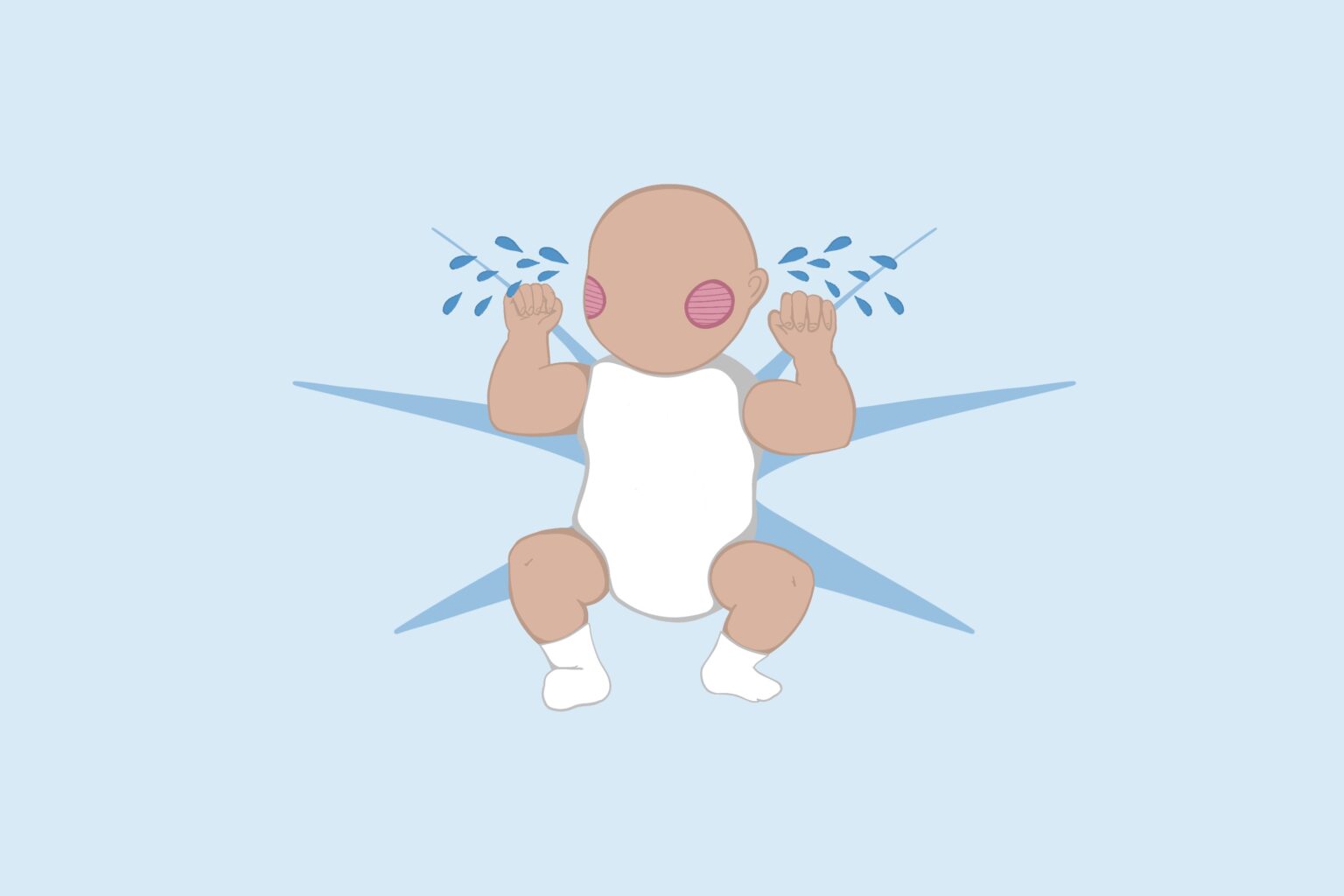Colic: What is it, and What can you do to Help?

Colic: Many sleep-deprived parents will say their baby has colic, but just because your baby is fussy each night does not automatically mean colic. True colic is generally defined as inconsolable crying lasting several to many hours occurring several times a week. It can occur day or night. It typically starts around the third week of life and usually resolves itself by three months of age.
Colic strikes up to roughly 1 in 4 infants. Aside from crying that lasts for hours, signs your baby has colic include a slightly hardened belly with gas, your baby pulling up or rigidly stretching out legs, and unusually intense crying. A baby’s cry may sound more distressed than normal crying. This frequently makes parents even more upset because their baby genuinely sounds like he or she is in pain.
Colic has been reported in babies for hundreds of years, but we still do not know its definitive cause. Theories behind colic include lactose intolerance, allergies, overstimulation, and even nervous parents. Fortunately, the latter appears to be an old wives’ tale, but colicky babies do appear to have gas pains, possibly caused by intolerances to lactose or formula. Unfortunately, excessive crying increases gas pain as the baby gulps in air.
Although colic can be extremely frustrating, most of the time it resolves on its own. Some suggestions for helping colicky babies include swaddling, extra holding, reducing stimulation, stomach massage and rubbing, and extra burping. If you find something that works, use it. In a few weeks’ time, this difficult period should be over. In the meantime, parents of colicky babies should try to establish extra support for themselves, such as asking a family member or friend to take over for a little bit each day so stressed-out parents can take a nap and catch up on lost sleep.
While the majority of cases of colic don’t signal any underlying medical issues, there are few symptoms that should trigger a call to your pediatrician: mucus or blood in your baby’s stool; excessive spitting up (possible reflux problems); a refusal to eat; a baby not gaining weight. While is not abnormal, it is difficult. Don’t be afraid to make an appointment to discuss this issue with your pediatrician.
Sources:
- Clifford TJ, Campbell MK, Speechley KN, Gorodzinsky F
- Infant colic: empirical evidence of the absence of an association with source of early infant nutrition. Arch Pediatr Adolesc Med
- 2002 Nov;156(11):1123-8.
Powered by Bundoo®










